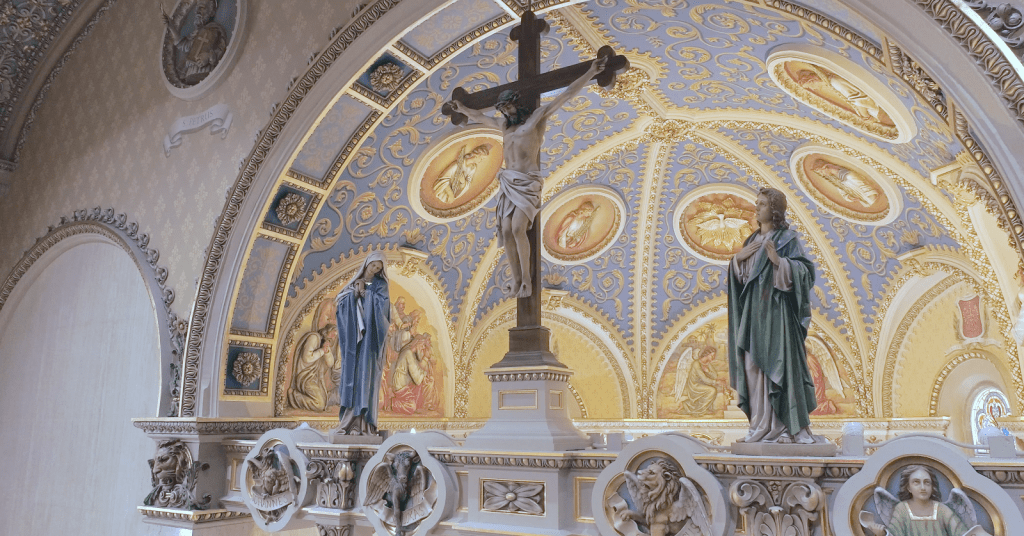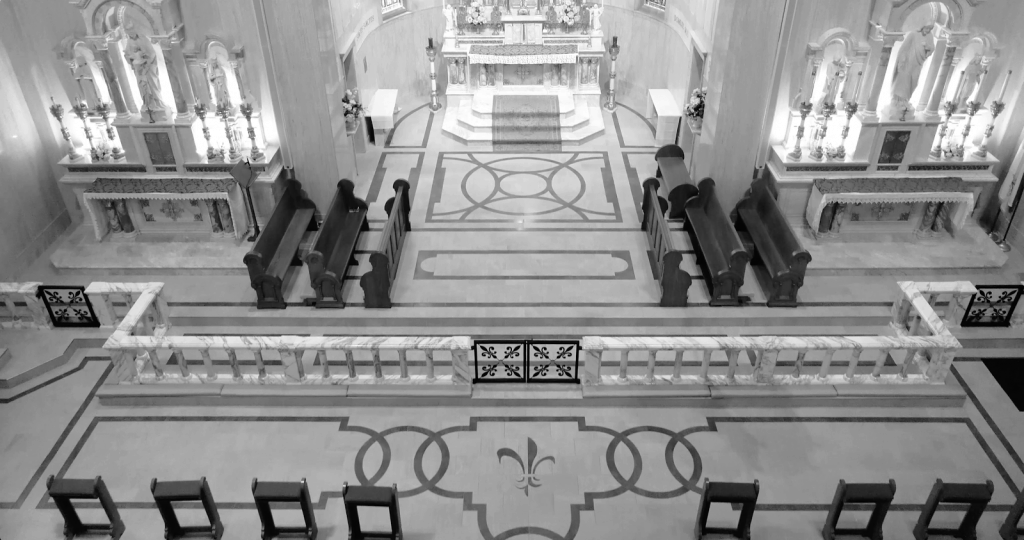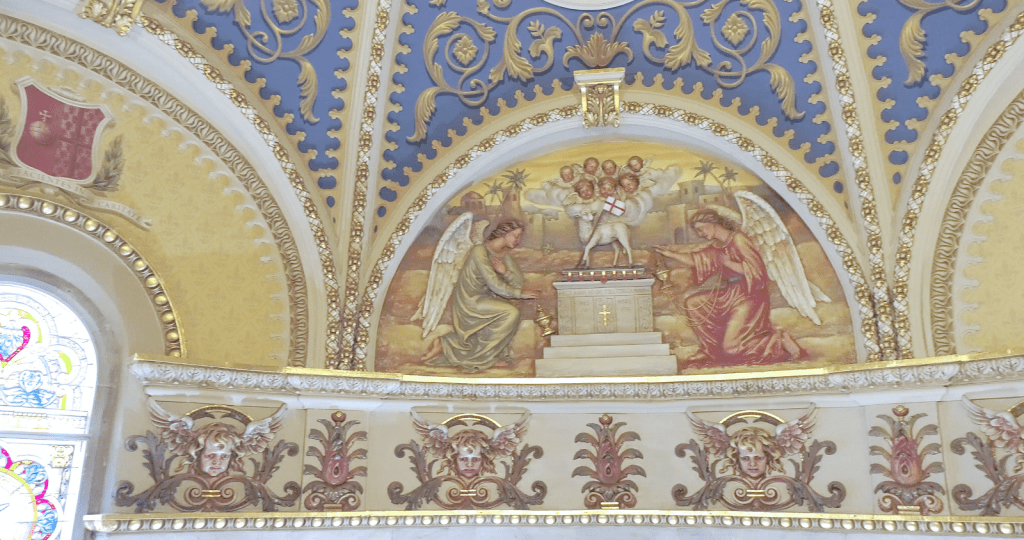Over the past few years a number of outstanding books on liturgy have been published. Among these is Signs of the Holy One: Liturgy, Ritual and Expression of the Sacred by Uwe Michael Lang. Fr. Lang is an Oratorian who currently lives at the Oratory of Saint Philip Neri in London. (He holds an M.A. in theology from the University of Vienna and a Ph.D. in theology from the University of Oxford.) I thought that one section in Fr. Lang’s book is particularly worth mentioning, especially in light of Adam’s outstanding video tour of Saint Stanislaus Oratory on Milwaukee’s South Side.
Writing about Catholic church architecture and drawing on the church’s tradition, Fr. Lang spells out four principles that should be present in every parish. Those principles are: verticality, orientation, thresholds and the presence of sacred art within the church. I would like to review each of these principles, and in so doing will quote liberally from Fr. Lang’s book. You will see how Saint Stanislaus beautifully reflects each of these principles, thereby assisting the soul in elevating its gaze to the Source of truth, beauty and goodness.
- Verticality: “A church needs to have a clearly expressed vertical dimension that goes beyond the functional demands of the building. . . . The vertical slant communicates a sense of God’s transcendence and leads the worshipper to “see the things that are above, where Christ is, seated at the right hand of God” (Col 3:1).
- Orientation: “A church should have a clear sense of directionality. . . . While allowing variation in the arrangement of architectural elements, the basic structure of the basilica, with its long rectangular nave ending in a semicircular apse, was considered singularly suitable for the essential demands of Christian worship and became normative in the Western tradition. The orientation of liturgical space, combined with the first principle of verticality, reaches beyond the visible altar toward eschatological fulfillment . . .”
- Thresholds: The first threshold Fr. Lang highlights is that which delineates the outside world from the church building itself. “Here is a limit or boundary that distinguishes the sacred building from the street or square where it stands but . . . . allows communication and passage between the two worlds.” The second threshold pertains to the church interior, which, according to Fr. Lang “concerns the sanctuary, which should ‘suitably be marked off from the body of the church either by its being somewhat elevated or by a particular structure and ornamentation’.” (Fr. Lang references here the General Instruction of the Roman Missal.)
- Sacred art within the church: Citing then-Cardinal Joseph Ratzinger, Fr. Lang writes, “The complete absence of images is incompatible with faith in the Incarnation of God. God has acted in history and entered into our sensible world, so that it may become transparent to him. Images of beauty . . . are an essential part of Christian beauty. Iconoclasm is not a Christian option.”





